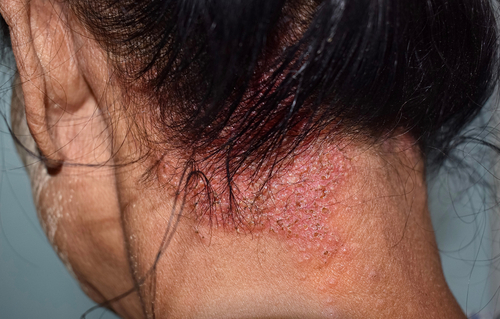Seborrheic dermatitis is a unique inflammatory skin disease with its own molecular signature, according to new data presented at the American Academy of Dermatology annual meeting in San Diego, CA.
Researchers analyzed RNA sequencing via noninvasive tape-stripping techniques on facial lesions from 27 untreated patients with seborrheic dermatitis and the facial skin of 18 healthy controls. They found that seborrheic dermatitis has a uniquely polarized profile distinct from atopic dermatitis and plaque psoriasis. In addition, skin barrier disruption is suggested by a downregulation of tight junction and lipid metabolism genes.
Specifically, they found:
- 1,374 differentially expressed genes (DEGs) were identified between seborrheic dermatitis and healthy controls (674 with increased expression, 700 with decreased expression).
- Strong and significant upregulation of Th17-related (i.e. IL23A, PI3, LL37) and Th22-related (i.e. IL22, S100A8, S100A12) pathways were detected in seborrheic dermatitis compared with controls.
- Significant Th1 activation (OASL, STAT1, CXCL9) compared with controls.
- Significant downregulation of skin barrier markers (CLDN1/8, FA2H, ELOVL3) in seborrheic dermatitis compared with controls.
- IGA positively correlated with immune markers, including Th1/IFNG, Th17/IL17A, and Th22/IL22 [r>0.3; P<0.1 for all] and negatively correlated with skin barrier markers (SMPD4, MGLL, PLA2G15 [r≤-0.38; P<0.05]).
“We are excited to have successfully employed noninvasive tape-stripping techniques developed from studying these diseases to study an understudied and undertreated inflammatory skin disease, seborrheic dermatitis. These findings will help establish the groundwork for greater understanding of this very common condition,” says TDD Editorial Advisory Board Member Emma Guttman-Yassky, MD, PhD, the Waldman Professor of Dermatology and Immunology and Health System Chair of The Department of Dermatology, and Director of the Laboratory for Inflammatory Skin Diseases at the Icahn School of Medicine at Mount Sinai in New York City, in a news release.
“Our data reveal that seborrheic dermatitis has a distinct immunological molecular profile. In addition, the skin barrier disruption observed in seborrheic dermatitis has unique molecular underpinnings, primarily in the tight junction of the epithelial skin cells and lipid metabolism pathways,” adds Benjamin Ungar, MD, director of the Alopecia Center of Excellence and director of the Rosacea & Seborrheic Dermatitis Clinic at Mount Sinai Health System. “These findings are the first to characterize the molecular profile of seborrheic dermatitis, and they will play an important role in advancing our understanding of this common and under-treated condition.” Dr. Ungar is also an assistant professor of Dermatology at the Icahn School of Medicine at Mount Sinai.
The study was funded by Arcutis. The U.S. Food and Drug Administration approve roflumilast foam ( Zoryve, Arcutis) for the treatment of seborrheic dermatitis in individuals 9 years of age and older on December 15, 2023.


